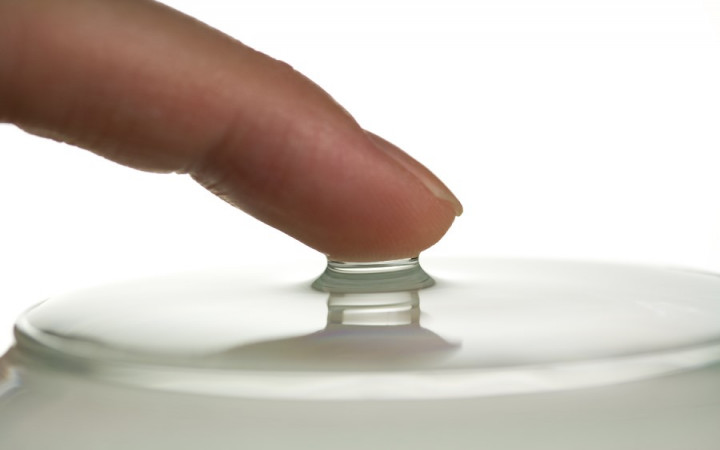Today’s Wonder of the Day was inspired by Koenig Class from Arlington Heights, IL. Koenig Class Wonders, “What is surface tension and how does it work?” Thanks for WONDERing with us, Koenig Class!
Have you ever experimented with water? Sure, you probably drink several glasses of water each day. You also use it to clean your body when you take a bath or a shower. But did you know it possesses some cool scientific characteristics?
For example, did you know that small insects, such as water striders, can walk on water? Did you know that, if you have a light touch and a steady hand, you can float a needle on the surface of water, despite the fact that the needle is much denser than the water?
Floating needles and water striders walking on water can both thank the same property of water for these amazing feats. What are we talking about? Surface tension, of course!
A scientist will tell you that surface tension is the property of the surface of a liquid, such as water, that allows it to resist an external force. Surface tension is the result of cohesive forces between similar molecules. When measured, surface tension has the dimension of force per unit length.
But what exactly does that mean? Have you ever noticed how water tends to form drops? When you wash your family car, you can easily see beads of water form in many different places. Instead of dispersing rapidly, molecules of water tend to cling to each other.
Why do they do this? Cohesive forces between liquid molecules make them more attracted to each other than other types of molecules, such as those of a car or a cup or the air. As a result, the molecules of a liquid tend to stick together, forming a shape with the least surface area possible. This is why water droplets and bubbles tend to take spherical shapes.
As the cohesive forces between liquid molecules help them hold on tightly to each other, something interesting happens at the surface of the liquid. At the surface, liquid molecules can only latch onto other molecules beside and below them. Above them, there are only air molecules.
At the surface of a liquid, the cohesive forces between liquid molecules cause the surface molecules to cling even more tightly to the molecules beside and below them, since there are no liquid molecules above them. This creates the phenomenon of surface tension, which creates a force similar to an elastic membrane on the surface of the liquid.
Since there are no liquid molecules pulling from above, the molecules at the surface of a liquid experience an inward or downward pull from the molecules below and beside them. This pull causes the surface molecules to contract and resist being stretched or broken. In other words, the surface molecules are under tension, which is where the term surface tension comes from!
Thanks to surface tension, the surface of a liquid acts like a thin, elastic membrane. This is why water striders can walk on water. It's also why you can float a needle on top of water. So why can't you walk on water?
Surface tension can be overcome with sufficient force. Insects heavier than water striders and objects larger than needles can easily break the surface tension, allowing them to break through and separate the top layer of water molecules.
You might still feel the force of surface tension if you're not careful, though. When you dive into a pool, your hands create an entry point through the water's surface for your body to pass through. If you do a belly flop, though, your body will encounter much greater force from the surface tension of the water, resulting in that painful stinging sensation you may have felt before!





